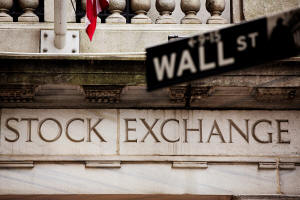Stock-hungry volatility funds, ‘gamma-heavy' options dealers could buoy
US equities
 Send a link to a friend
Send a link to a friend
 [December 05, 2023] By
Saqib Iqbal Ahmed [December 05, 2023] By
Saqib Iqbal Ahmed
NEW YORK (Reuters) - An epic rally in U.S. stocks has sent Wall Street's
fear gauge to a post-pandemic low. Options strategists believe market
gyrations may stay subdued for some time - potentially smoothing the way
for further gains in equities.
The Cboe Volatility Index, which measures investor demand for protection
against stock swings, is hovering just above that low of 12.45 hit late
last month, in contrast with a long-term average level of about 20.
The move occurred as expectations that the Federal Reserve is done
cutting interest rates fueled a rebound in the S&P 500, taking the index
to a new closing high for the year. The S&P 500 is up 19% year-to-date,
following a 9% gain in November - its best monthly performance since
July 2022.
A 0.5% decline in the S&P 500 on Monday took the VIX to 13.08.
Since the VIX tends to move inversely to stocks, market participants
watch it closely as an indicator of investor sentiment and positioning.
With momentum firmly on the side of the bulls and investors' risk
appetite high, options mavens say volatility is likely to remain subdued
for the remainder of the year.

"Volatility has really collapsed," said Ilya Feygin, consultant to
institutional execution services firm WallachBeth Capital. Feygin
believes volatility is likely to remain suppressed until at least to
year-end.
Among the factors closely watched by market participants are the funds
that take their signals from market volatility, selling when volatility
picks up and buying when it subsides. As market gyrations have calmed,
these volatility-targeting funds have become buyers of U.S. equities,
sucking up some $30 billion worth of purchases in the week ended Nov.
30, according to data from Nomura Securities.
If stocks average only a 0.5% move daily over the next month, the funds
could buy around $21 billion more worth of equities, Nomura strategist
Charlie McElligott said, offering upside support for stocks into
year-end.
Another volatility dampener comes from options dealers, who act as
intermediaries between buyers and sellers. These dealers are now net
long "gamma" - meaning they have to sell stock futures when markets
rally and buy futures when markets sell off in order to square the risk
on their books.

[to top of second column] |

A street sign for Wall Street hangs in front of the New York Stock
Exchange May 8, 2013. REUTERS/Lucas Jackson

"Hedging flows associated with this should restrict market
movements," Brent Kochuba, founder of options analytic service
SpotGamma.
History also shows that once volatility expectations become subdued,
they can linger at low levels for a while. The VIX took anywhere
from three weeks to more than three months to break decidedly above
13 the last five times it fell below that level for more than a
couple of days, a Reuters analysis showed.
Overall, the VIX has been below 13 for roughly 20% of its three
decade history.
The calm in markets has rewarded those betting against volatility.
The 1x Short VIX Futures ETF, which tracks the Short VIX Futures
Index and seeks to provide greater returns as volatility falls, is
up 135% for the year, making it the 20th best performing U.S.-listed
ETF, according to VettaFi data.
Still, some market watchers see a potential warning sign in the
recent calm.
In November, traders' expectations of S&P 500 30-day implied
volatility - which measures expectations for stocks’ gyrations -
fell below 30-day realized volatility - or how much stocks were
actually moving - by the widest margin since December 2022.
The last four times a similar drop happened saw the S&P 500 decline,
on average, by 8.5% over the next 31 days, data from Cantor
Fitzgerald showed.

Eric Johnston, Cantor Fitzgerald’s head of equity derivatives and
cross asset, said those drops occurred within the scope of a 250%
gain for the S&P 500 in the period, which stretched from 2014 to the
present.
Nevertheless, hedges bought now would pay well should another market
decline materialize, he said.
Implied volatility falling below realized volatility, "tends to be
the calm before the storm," Johnston said.
(Reporting by Saqib Iqbal Ahmed; Editing by Ira Iosebashvili and
Grant McCool)
[© 2023 Thomson Reuters. All rights
reserved.]
This material may not be published,
broadcast, rewritten or redistributed.
Thompson Reuters is solely responsible for this content. |